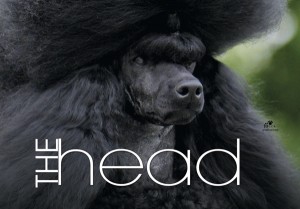The Head
Click here to read the complete article
 By Wendell Sammet
By Wendell Sammet
For every breed, the head is the hallmark of its type. Details of head type are critical elements in terms of establishing that vital link between type and function. The head could be considered as the most vital structural element to assist the dog in performing its traditional function. Therefore, it goes without saying that the general structure of the head is dependent on breed and function. No aspect of head type is arbitrary or vague, although semantics can sometimes give that false impression. Proper head structure dictates a dog’s ability to do its job.
Long, narrow, streamlined heads with the face forward are designed to reduce wind resistance, which logistically enhances breeds built for speed. Terriers, Hounds, Retrievers and other breeds designed to subdue and capture game require a well developed maxillary skeleton. Any indication of a snipey, weak structure unmistakably impedes their functionality. Dogs that work trail scent or retrieve objects require a head and neck of equal length to permit the mouth to easily reach the ground.
The dog has three distinct skull types. Each one is comprised of precisely the same bones, but the shapes of these bones will vary. Which of the three types is your dog?
Is he the brachycephalic type possessing a shorter, wider head such as the Bulldog? Or is he the mesocephalic or the intermediate type such as the Poodle? The third main type, the dolichocephalic type has a long, narrow head as in the Collie. The braincase is similar in each one. However, the width of the eye and the length of the muzzle will vary according to breed. Here is an easy way to remember these skull types. They all contain the word cephalic, a Greek word meaning head. Brachi is the Greek term for short, doncus in Greek means long, and meso means intermediate.
Click here to read the complete article

Short URL: https://caninechronicle.com/?p=199506
Comments are closed











